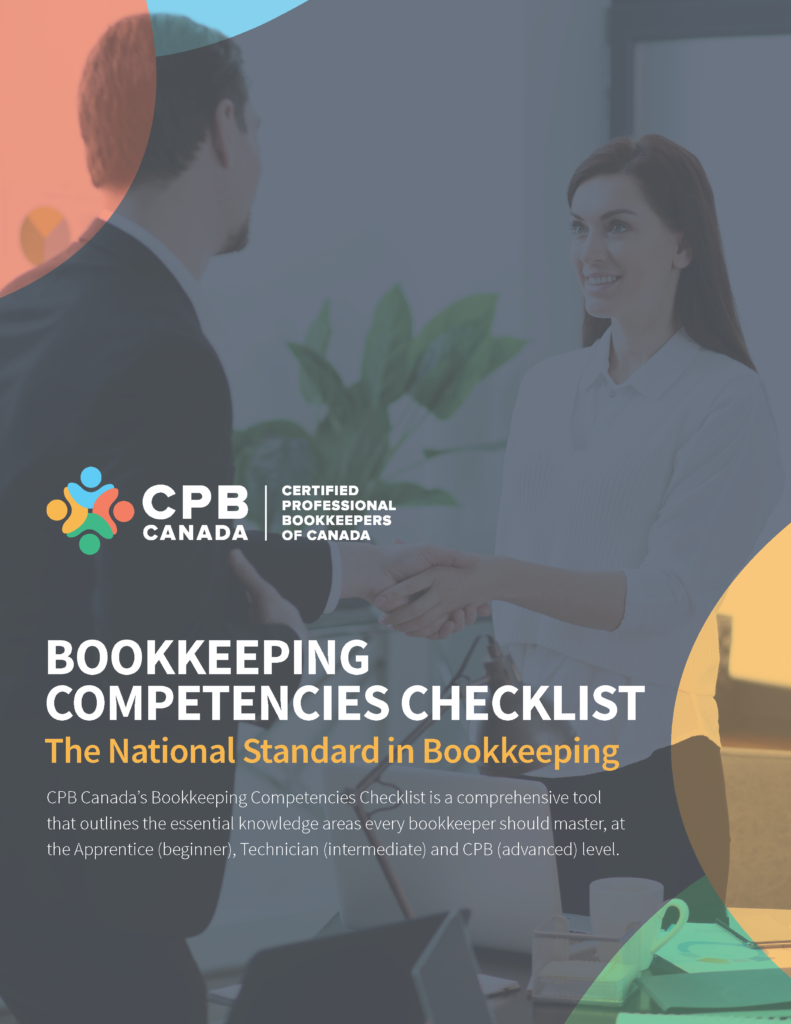Achieve Excellence And Advance Your Career With CPB Canada
Empower your professional journey by gaining immediate access to the official CPB Canada Bookkeeping Competencies Checklist. Use this essential resource to evaluate your skills and plan your next steps toward certification and success.
The CPB designation represents more than just balancing the books. It reflects expertise, discipline, continuous learning, and professional accountability. At the core of this standard is the CPB Canada Bookkeeping Competencies Checklist, a comprehensive framework that outlines the essential knowledge every bookkeeper should develop.
This checklist is your roadmap to success. It offers a structured path to assess your current abilities, identify growth opportunities, and prepare to meet the national standard of bookkeeping excellence. Whether you’re just starting out or are an experienced professional, this tool is designed to support your career growth.
Why Core Competencies Matter
Building core competencies is crucial to developing a successful and credible foundation for your career. These skills are the foundation of accuracy, compliance, and continuous learning and development. They prepare you for the rapidly evolving industry and set you on the path to being a trusted expert in your profession.

1. General Bookkeeping
Understanding the basics of your role is essential. For bookkeepers, this includes keeping accurate records and managing daily operations.
Why it matters: A strong foundation ensures reliability and trust in your work.
2. Sales Taxes
Every industry has specific compliance requirements, such as tax laws, labour regulations, or data privacy policies.
Why it matters: Staying compliant protects businesses and professionals from penalties and legal issues.
3. AR & AP (Accounts Receivable and Accounts Payable)
Managing accounts receivable and payable is key to smooth financial operations.
Why it matters: Proper management ensures healthy cash flow and efficient processes.
4. Period End
Finalizing reports, reconciling data, or completing projects ensures accuracy and readiness for future audits or evaluations.
Why it matters: It provides a clear snapshot of performance and readiness for review.
5. Inventory
Tracking and managing resources is vital, particularly for product- or asset-focused businesses.
Why it matters: Proper tracking ensures accurate reporting and optimal operations.
6. Payroll
If applicable, managing payroll, employee benefits, or overseeing teams is critical.
Why it matters: Ensures compliance, employee satisfaction, and smooth workforce operations.

Developing expertise in these areas not only enhances your credibility but also provides the foundation required to meet the national standard of bookkeeping knowledge. By doing so, you establish yourself as a trusted expert, unlock new career opportunities, or empower your team to deliver exceptional results that drive organizational success.
The Benefits Of Growth
From Competency To Expertise
Demonstrating your abilities through the Bookkeeping Competencies Checklist sets you apart. It’s a tangible way to show your commitment to professional development and high standards.
Build Your Confidence
Advance Your Career
Earn Trust and Recognition
Join a Thriving Community
Chart Your Path To The CPB Designation
CPB Canada recognizes that bookkeeping professionals build their expertise over time. Our competency framework supports you at every stage and provides three clear options based on your current experience and knowledge.
-
CPB Designation
Demonstrates advanced expertise and professional accountability, confirming you meet the national standard to hold the Certified Professional Bookkeeper designation.
-
Technician (Progress Level)
Verifies intermediate skills and experience as you work toward becoming CPB-ready.
-
Apprentice (Progress Level)
Confirms foundational knowledge and establishes your starting point on the path toward the CPB designation.
Put Your Knowledge To The Test
Ready to see where you stand? Take the first step toward certification and professional development.
Access our entry-level quiz for a more detailed assessment of your skills and personalized recommendations; members have unlimited access, while non-members can purchase it.

Download Your Roadmap To Success
Take the complete Bookkeeping Competencies Checklist with you. Download the PDF to track your progress, create a personalized learning plan, and take practical steps toward achieving your career goals. This is your guide to becoming a sought-after bookkeeping professional.


